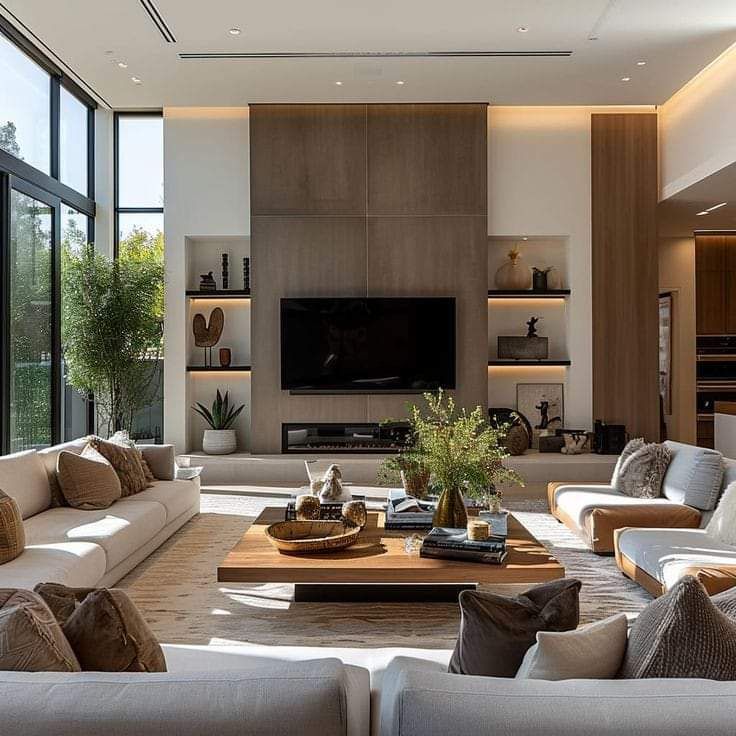Light is very important in interior design. It gives life to the interior and is important for our activities and understanding of the world around us. The interior designer can create impressive design concepts in the interior by controlling and designing natural and artificial light.
The right light, in addition to increasing the attractiveness and beauty of the space, can have a significant effect on the mood and emotions of the people in that space.
There are different types of lighting that are used to design spaces:
1. General lighting:
General lighting refers to the use of light for general illumination of different spaces and environments in a building or interior space. The main purpose of public lighting is to create a bright environment and provide sufficient lighting for daily activities and services. This lighting usually uses light sources such as pendant lights, ceiling lights, or wall lamps. For example, in a living room, the general lighting may be a pendant light in the middle of the ceiling and wall lights around the room, or hidden ceiling lights to evenly illuminate the space.
2. Task lighting:
Work lighting refers to the use of light to provide appropriate and effective lighting for performing work tasks and activities in work spaces. The main goal of this lighting is to create a suitable work environment with proper lighting and without disturbing shadows. This type of lighting is used for specific tasks such as reading, cooking, or working at a desk. Table lamps, under-cabinet lights, and standing lamps are suitable for this purpose.
3. Accent Lighting:
Accent lighting refers to the use of light to emphasize a specific point or object in a space. This type of lighting is usually used to highlight or highlight important, beautiful or influential objects in the space.
For example, in an art exhibition, accent lighting may be placed on a particular painting or artwork to draw more attention to it. Also, in commercial spaces such as stores, accent lighting on products and showcases can be effective advertising and attract customers to specific products.
The use of accent lighting can add a special effect and beauty to the space and provide a better understanding of the important objects in it.
4. Mood Lighting:
This lighting is used to create a special and emotional atmosphere and a bright and lovely environment for daily or social activities such as public places, conference halls, classrooms, restaurants, stores, etc. The main purpose of ambient lighting is to create a bright environment. And it is lovely for people to work or spend time there comfortably and with pleasure. Dimmer lights, colored lights, or electronic candles can be used to create a cozy and comfortable atmosphere.
5. Natural lighting:
Natural lighting refers to the use of natural lights such as sunlight and natural scenery to illuminate and beautify spaces. This type of lighting is often done by using windows, glass roofs, shades and other natural means to absorb external light and bring it into spaces.
Natural lighting has many benefits, including improving people’s mood and general feeling, increasing energy and concentration, creating a connection with the world outside the indoor space, and reducing energy consumption for lighting.
Using natural lighting in interior design and architecture can help create beautiful, relaxing and intimate spaces and bring people closer to nature.
With the correct combination of the mentioned types of lighting, you can create a pleasant and functional atmosphere in your home.




No comment